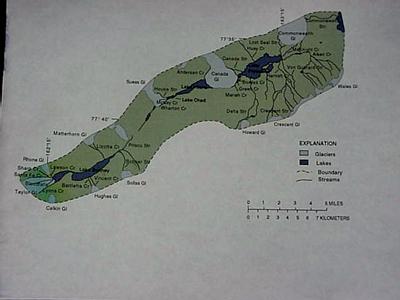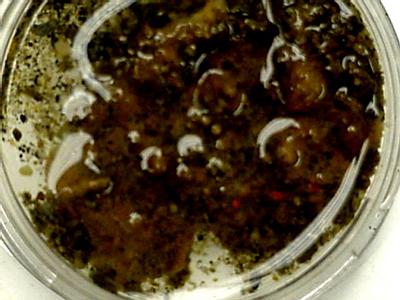2 December, 1999
Thursday December 02, 1999
Got up at 0445 hours almost 6 hours of sleep. I feel a little better at
least rest wise. I am still sore and really do not feel right. Went over
to Crary lab to find Barb already busily at work. I worked on getting a
journal out then worked on emails. I then played around with getting a final
list of web sites for our parcticipant's last night. Actually this is half
the class's last night, tomorrow we do the other half. I went back to dorm
and rested for an hour.
Barb and I met for a couple of hours about the web sites and our final
classes. Then I had to go to the "beauty parlor". I got a hair cut today
(actually I had all five cut, it is cheaper that way). There are two lady
barbers here. Remember there are, at least until February, about 1000
people here, then it drops down to about 325. This place must be like a
ghost town in the winter season. It must also be a tad depressing too for
remember once the sun finally sets in February it will NOT come up for about
5 months. By the way haircuts are free, just costs you the tip.
Class went well. Tonight's speaker was Kathy Welch; she is the senior lab
manager for the LTER project, a brilliant and most pleasant young woman.
Kathy pointed out that this is one of 21 LTER sites around the world, each
one monitoring the long term (theoretically forever) ecology of various
ecosystems type. The one in the dry valleys is one of the most extreme in
the world, at least on a grand scale. The ecology in sulfur rich hot
springs and at hydrothermal vents (places under the oceans where volcanoes
spit molten rock into the sea and vent their gases as well) are much
harsher, but they are, relatively speaking very very very small compared to
the dry valleys, the coldest and driest place on earth. The limiting factor
here is liquid water.
Kathy is a geochemist, but fielded questions, and fielded them very well I
might add, from the areas of both physics and biology as well. Her major
concerns were the lakes that are found in the dry valleys. She said those
of the Taylor Valley; Bonney, Hoare and Fryxell are about 20 -40 meters deep
with 3 - 6 meters or perennial ice cover, another lake in the Wright Valley,
Vanda, is about 75 meters deep.
She explained that the only input into the lake is any glacial melt that
might occur in the summer months and any snow that might fall. She pointed
out that the lakes freeze at the water-ice interface, where the liquid and
solid water meet, meaning they freeze from below and that most of the water
is lost from its ice covered surface. This is where the ice sublimates,
changes into gaseous water and leaves. I was shocked to learn that the
average amount of ice lost each year by sublimating is about 1 1/2 meters
(almost 5 feet). Unbelievable!
Kathy got into her area of expertise, the chemistry of the lakes. Lake
Hoare, she described as quite boring because it is virtually fresh water
from the top to the bottom. Surface salt concentration being (50 mg/l) and
at the bottom (100 mg/l).
Lake Bonney on the other hand is a chemist's puzzle. The salt concentration
here, on the average are 10 X saltier then sea water. Because when salt
dissolves, or any solute for that matter, in water it lowers the freezing
point of the water. The temperature in Lake Bonney is between -5oC and -7
oC and fresh water freezes at 0oC. So as Kathy says, when you take water
samples form the lake the cold water "hurts your hands".
The real amazing part came when she described Lake Vanda. Kathy pointed out
that the bottom of Lake Vanda is so salty that there is a "brine"
(hypersaline) layer (very high salt concentration) on the bottom of the
lake. This layer, about 60 meters below the 5 meters of permanent ice
cover, covers the bottom. The significance of this is as follows: The
extremely clear ice cover allows much light to penetrate to the bottom and
there it hits the very salty and therefore very dense layer, and much of
this energy gets trapped. The result is amazing. The temperature on the
bottom of Lake Vanda, because of the trapping of this energy, is about 25oC
or 77oF . (That is as warm as many of the tropical seas of the world.)
Kathy said that the salts are brought in by the glacial melt water "running"
through stream beds that have salt on them. This salt has been deposited
there, over thousands upon thousands of years, by winds carrying it up
valley from the Ross Sea.
We closed out the class with Barb talking about the rotifers she studied in
the mat in Lake Hoare. After class the gang went to the lab to see this
mat. Exciting stuff! When we finished I returned to my dorm and sat and
read until I guess 2300 then went to bed.
Cioa,
Penguin Pete the Polar man

Map of Taylor Valley <> Photo by Peter M. Amati, Jr

This is a photo of a petri dish containing and algal mat taken from Lake Hoare. <> Photo by Peter M. Amati, Jr
Contact the TEA in the field at
.
If you cannot connect through your browser, copy the
TEA's e-mail address in the "To:" line of
your favorite e-mail package.
|
